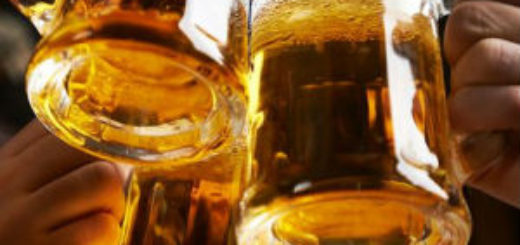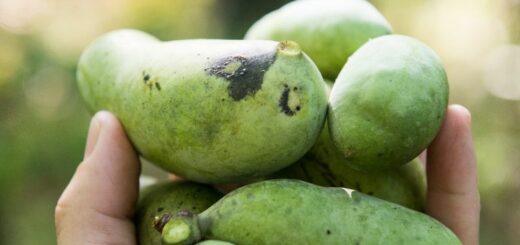Homebrew Beer – The Best Beer Is The One You Make
I love beer. There, I said it. I’m not making apologies. I’ve been into beer since my college years. While I do admit my taste has been noticeably refined since then, beer is a beverage of which I was fond since my early twenties.
Then, I learned how to make it.
I’ve been homebrewing beer since 1998. It is a very relaxing and fun hobby of mine.
As with a lot of hobbies, there are several levels of investment you can make when starting to brew your own beer. You’re looking at a $30 investment for about the low end and it goes up from there. You can spend a lot more, but I started brewing my own beer in the $30 range.
Homebrew beer can be separated into two categories: extract and whole grains. Each has advantages and drawbacks over the other. Extract is syrup that consists of most of the main ingredients of beer. When brewing beer using extract, you simply need water, yeast and some fermentable substance (sugar will do).
The advantages of extract brewing are the cost tends to be cheaper and the time it takes to make beer is less than with whole grains. The disadvantage is you are basically limited to the formula of ingredients in the extract. While there are many different types of extract for the various types of beers (Stout, Ales, Lagers, etc), the choices are more limited than the whole grain method.
Whole grain brewing is done by boiling and mixing the individual ingredients (malt, barley, and hops) over a longer period of time until the mixture (also called “wort”) is ready for the addition of the yeast and the fermentable substance. The advantage of whole grain brewing is you can really customize the flavor of the beer. Whole grain brewing makes it easier to do things like make a “clone beer”, or a beer that is similar in flavor and style of another well known beer, like Samuel Adams or Budweiser. The disadvantage of whole grain brewing is the additional time and cost involved. This is probably a good type of brewing to get into if you are more experienced.
Yeast is a very important ingredient in beer. In fact, there are many strains of yeast available for brewing beer (and other alcohol in general). The two types I’ve dealt with are dry active yeast and liquid yeast.
I’ve personally found that liquid yeast, while more expensive than the dry yeast, is the more effective of the two. The type of liquid yeast I use (Wyeast) comes in a foil packet. Inside the foil packet is the yeast and a small plastic bubble filled with unfermented beer. When I’m ready to make some beer, I squeeze the foil packet until the plastic bubble breaks. This mixes the unfermented beer with the yeast and starts a fermentation that gets the yeast active. By the time I have my beer ready, the yeast is good and ready when it is added to the mix. There are many types of liquid yeast available. The yeast is usually named for the type of beer it is better suited for, like American Ale or German Alt. I think there is some room for experimenting here, though.
The dry yeast is cheaper than the liquid variety, and in some cases you get a packet of the dry yeast when you buy a can of extract with which to brew beer. The disadvantage of dry yeast is the variety of yeast strains can be limited, and dry yeast can sometimes take longer to begin fermentation.
Aside from what I’ve already mentioned, sanitation is one more important factor in making beer. It is very important to have the equipment you use to make beer sanitized. There are several methods to do this. Household bleach mixed in warm water (1 tablespoon bleach per gallon of water) can handle your sanitizing needs, just make sure you rinse properly after sanitizing. There are other sanitizers available as well. I like One Step sanitizer, which is a rinse free sanitizer. You simply add a tablespoon of One Step to a gallon of hot water and soak the parts in it for 10-15 minutes. After that, remove and they’re ready for use. I also like One Step over bleach because bleach always seems to leave some kind of aftertaste, no matter how much you rinse.
The final portion of the homebrewing process, aside from the drinking, is bottling. Again, sanitizing plays an important part here. What is also important to consider is how you want to bottle the beer. Would you like to have one five gallon keg? How about putting your beer into many 12 ounce bottles? Or, a few five liter mini kegs? Several options are available. I’ve experimented with several options, and my latest favorite is reusing 2 liter soft drink bottles. I like this because it really makes serving to a group of people much easier. Also, storage is a bit easier for 2 liter bottles.
Once you have your bottles, kegs, etc picked out and sanitized, you’ll need some priming sugar for the bottling process. I’ve read a few methods for accomplishing this. One method I’ve found that works well is to bring two cups of water to a boil, mix in 5-6 tablespoons of sugar and boil for 5 minutes. Then, add this to the beer you have been fermenting before the beer is poured into the bottles, kegs, etc. After you’re done, you’ll have beer ready for the tasting in a week or two (at least one week for bottles, two weeks for mini kegs).
If you’re considering taking up beer making as a hobby, I invite you to give it a try. I think you’ll find it to be great fun. Chances are, your friends will agree…as long as you’re willing to share some of your beer
Paul has been an avid beer nut since 1990 and a beer homebrewer since 1998. Check out his blog at http://www.prhsolutions.com/brewsletter




My company , Luxury Bath of Richmond , is interested in being a vendor at this years event in August.…
There will be a number of breweries there with some awesome brews! Isley Brewing Company– Choosey Mother Porter, Legend Brewing…
what brews will they have at the event ???
Thank You for this.
This is good. Thanks!